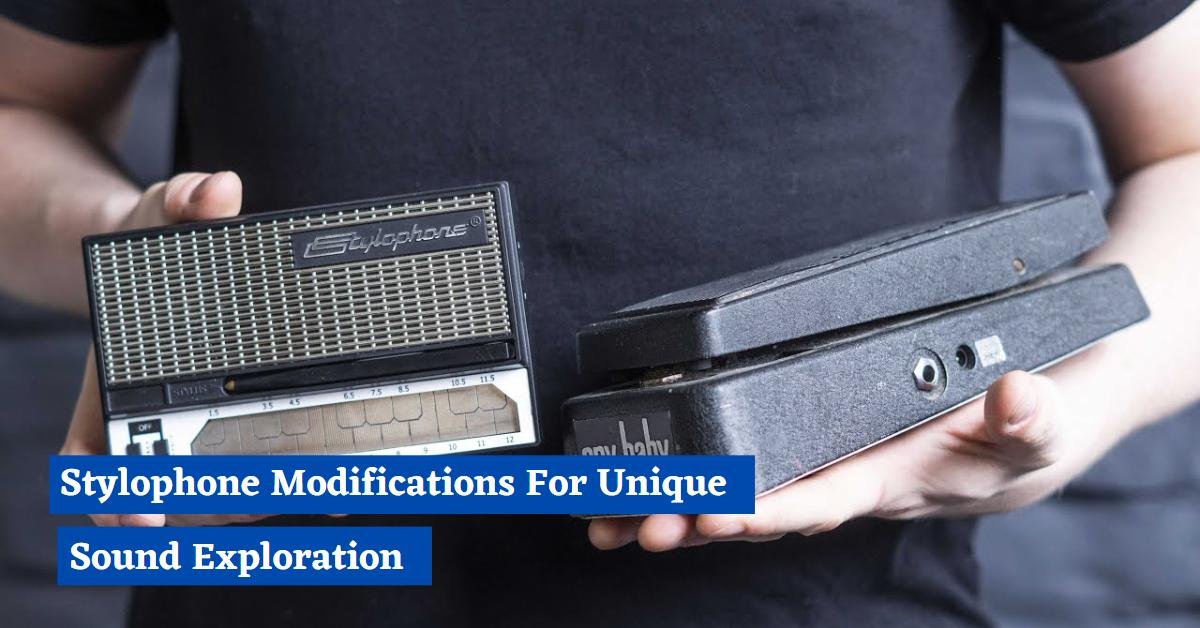Stylophone modifications offer endless possibilities for unique sound exploration by circuit bending, incorporating external effects, MIDI integration, customizations, and advanced sound design techniques.
Circuit Bending and DIY Modifications
The world of circuit bending opens up a realm of endless possibilities for Stylophone enthusiasts. By modifying the internal circuitry, one can create unpredictable and unconventional sounds. Circuit bending involves experimenting with the electronic components of the Stylophone, such as resistors, capacitors, and potentiometers. This process allows users to manipulate the instrument’s sound output, creating a truly unique sonic experience.

External Effects and Processing
To further expand the sonic capabilities of the Stylophone, incorporating external effects and processing units can be a game-changer. By connecting the Stylophone to effects pedals, synthesizers, or software-based plugins, you can explore a vast array of sounds beyond the instrument’s original limitations. Experimenting with delay, reverb, distortion, or modulation effects can transform the Stylophone into a versatile tool for sound exploration.
MIDI Integration and Digital Control
In the digital age, the integration of MIDI (Musical Instrument Digital Interface) with the Stylophone offers a new level of control and flexibility. MIDI integration allows the Stylophone to communicate with other MIDI-enabled devices, such as synthesizers, samplers, or software applications. This opens up a world of possibilities for expanding the sound palette, triggering samples, and even using the Stylophone as a MIDI controller for other instruments.

Customizations for Enhanced Playability
While modifying the sound output is crucial, improving the playability of the Stylophone can greatly enhance the overall experience. Adding features like additional keys, touch-sensitive surfaces, or pressure sensors can provide more expressive control over the instrument. These customizations enable musicians to manipulate the sound in real-time, adding a new layer of interaction and creativity to their performances.
Advanced Sound Design Techniques
For those seeking to dive deeper into sound exploration, advanced sound design techniques can be applied to the Stylophone. By using techniques such as granular synthesis, frequency modulation, or wavetable synthesis, you can push the boundaries of the instrument’s sonic capabilities. These techniques allow you to create complex and evolving sounds that go beyond the traditional Stylophone timbres.
What is a cool fact about the Stylophone?
A cool fact about the Stylophone is that it was famously used in the iconic song “Space Oddity” by David Bowie. The distinct sound of the Stylophone can be heard in the song’s intro and throughout, contributing to its unique character and popularity.

What is the purpose of a Stylophone?
The purpose of a Stylophone is to provide a compact and portable electronic musical instrument that allows users to create music and explore different sounds. It is designed to be played by using a stylus to touch the metal keys, producing a distinctive and expressive sound that is instantly recognizable.
Does the Stylophone have a built in speaker?
Yes, the Stylophone typically has a built-in speaker, allowing users to play and listen to the instrument without the need for additional audio equipment. This feature makes it convenient for practicing, jamming, or performing on the go, as it eliminates the need for external amplification.
Can you connect a Stylophone to a computer?
Yes, the Stylophone can be connected to a computer. While older models may require additional adapters or interfaces, newer versions often have built-in USB connectivity. This allows users to connect the Stylophone directly to a computer and utilize software applications or digital audio workstations (DAWs) for recording, processing, or integrating the instrument into their music production workflows.
I Made A TAPE LOOP STYLOPHONE And You Should Too
FAQs
Can I modify my Stylophone if I don’t have technical knowledge?
While some modifications require technical expertise, there are beginner-friendly modifications available. For example, external effects and processing units can be easily connected to the Stylophone without any modifications to the instrument itself.
Are there any risks involved in circuit bending my Stylophone?
Yes, there are risks associated with circuit bending, as it involves manipulating the internal circuitry. If not done properly, it can damage the instrument or render it inoperable. It is advisable to research and follow circuit bending tutorials or seek guidance from experienced individuals before attempting any modifications.
Do modifications void the warranty of the Stylophone?
Yes, modifications typically void the warranty of the instrument. It is essential to consider this before making any modifications. If you are unsure, it is recommended to consult the manufacturer or seek professional advice.
Can I reverse the modifications if I change my mind?
Depending on the modifications, some can be reversible, while others may be permanent. It is important to understand the implications of each modification and whether you are comfortable with potential irreversible changes before proceeding.
Conclusion
Stylophone modifications provide an exciting opportunity for sound exploration and customization. From circuit bending and DIY modifications to incorporating external effects and processing, there are countless ways to transform the Stylophone into a unique sonic instrument.
By venturing into MIDI integration, customizations, and advanced sound design techniques, musicians and enthusiasts can unlock a world of creative possibilities. However, it is crucial to approach modifications with caution and ensure that you have the necessary knowledge and expertise to avoid potential risks. With careful experimentation and a sense of adventure, the Stylophone can become a versatile tool for unleashing your creativity and pushing the boundaries of sound exploration.


